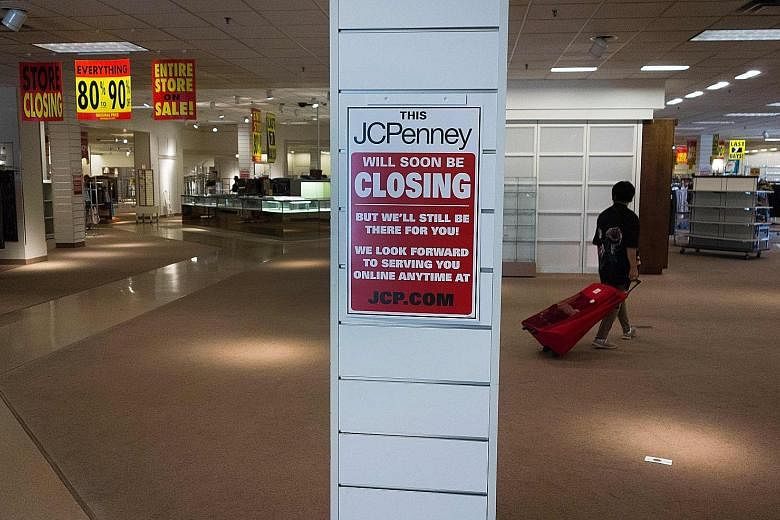NEW YORK • As the retail industry churns in the Amazon era, American shopping malls are turning to a new generation of store, food and entertainment offerings to make up for an exodus of department stores.
Prime mall real estate is increasingly going to players which began online and are graduating to bricks and mortar, such as plus-size clothing label Eloquii, or stores selling niche items like candy and conflict- free diamonds.
In some cases, these retailers are taking space, literally, from exiting chains like Macy's.
Other additions include trendy burger restaurant Shake Shack and Dave & Buster's, whose video game and pro-sports viewing restaurants are emblematic of the "experiences, not stuff" mantra now resonant among consumers.
The changes to malls - climate- controlled beacons of American consumerism that grew rapidly in the latter part of the 20th century - are part of a fundamental industry rethink as e-commerce, led by gargantuan purveyors like Amazon, takes market share and alters consumer expectations.
"This isn't the same culture as 30 years ago," said retail industry analyst Dana Telsey, who sees today's moves as the "early innings" of a multi-year evolution.
Malls will endure because they offer "the excitement of being able to see what is new", the chief executive of Telsey Advisory Group said. "It is a meeting place. It is an entertainment centre. You are always going to have shopping centres that engage."
The changing times are a period of reckoning for hundreds of second-tier malls in a country that experts say has long been "overmalled". A January review of 1,070 malls in the United States by Green Street Advisers, a real estate advisory firm, classified more than 330 malls as "at risk to close" due to declining occupancy, low sales, weak socio-economic demographics and anchor store vacancies.
"These malls only account for roughly 5 per cent of mall value in the US," the report said. "Most won't be missed."
Many of the vulnerable malls were built in the 1960s and 1970s, with department stores as anchors that attracted enough customers to also support secondary stores.
But stores in malls were often pricier than free-standing shops because of the heavy rents due to common costs such as heating, maintenance and security, said Professor Fred Hurvitz, who teaches retail studies at Penn State University.
The arrival of e-commerce and greater price transparency means malls must compete not only with Amazon for more cost-conscious customers, but with discount chains. "You're seeing a whole movement towards any way you can save the customer money, that's going to make you more viable with the customer," Prof Hurvitz said. "Without high traffic levels, the malls die."
Yet, mall developers dismiss talk of their demise. Mr David Simon, CEO of real estate investment trust Simon Property Group, said he has been encouraged by a trend of e-commerce chains, like Eloquii or eyeglasses seller Warby Parker, raising capital to open bricks-and- mortar stores.
Some of these newer brands could ultimately have as many as 400 stores, he said.
"In this cluttered world of trying to get people focused, we are seeing more and more brands that want to gravitate to where the traffic is," Mr Simon said. "By and large, in communities throughout the country, that is the mall. And that has not changed."
AGENCE FRANCE-PRESSE

